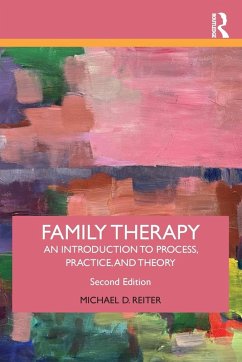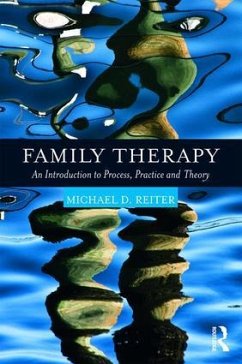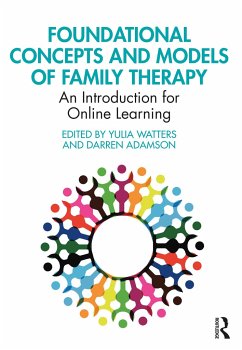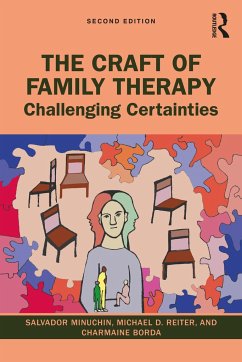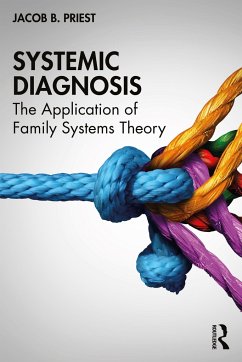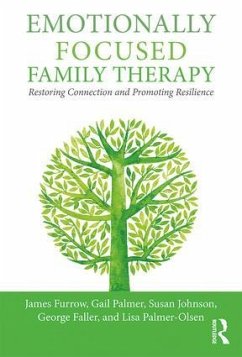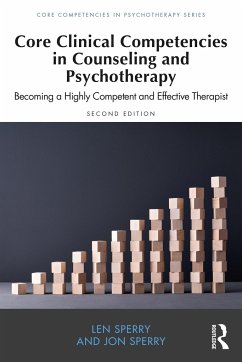Bringing Common Factors to Life in Couple and Family Therapy
Versandkostenfrei!
Versandfertig in 1-2 Wochen
Weitere Ausgaben:

PAYBACK Punkte
79 °P sammeln!





With the aim of renewing motivation, energy, and creativity in a therapists clinical work, this book explores how common factors may be utilized to increase effectiveness in couple and family therapy.
Eli A. Karam PhD, LMFT is a systemic therapist, trainer, applied researcher and educator at the University of Louisville, where he is a professor Adrian J. Blow PhD, LMFT works as a couple and family therapy intervention researcher and educator at Michigan State University where he is professor and department chair
Produktdetails
- Verlag: Taylor & Francis Ltd
- Seitenzahl: 268
- Erscheinungstermin: 15. September 2022
- Englisch
- Abmessung: 260mm x 183mm x 19mm
- Gewicht: 636g
- ISBN-13: 9781138686205
- ISBN-10: 1138686204
- Artikelnr.: 64102746
Herstellerkennzeichnung
Libri GmbH
Europaallee 1
36244 Bad Hersfeld
gpsr@libri.de
"Karam and Blow maintain that there is so much more to helping families beyond existing therapy models. This book is about that "something more," the common factors that cut across couple and family therapy (CFT) models. They show, for example, how to maximize client factors like motivation and hope. Readers learn how to conceptualize problems systemically, invite alternative views of the presenting problem, disrupt dysfunctional relational patterns, strengthen the therapeutic alliance, expand direct treatment systems, focus on self-of-therapist work and employ regular client feedback. Also, the authors share important best practices in self supervision and treatment planning. Most importantly, as the title suggests, they bring common
Mehr anzeigen
factors to life.
There is a wealth of wisdom in this book that will improve the readers' therapy and augment there treatment models. What I liked best was the regular reflective questions and learning activities that will encourage critical thinking and personalize each skill. They include, for example, exercises to help one consider therapeutic models that are consistent with one's personality, a hope history inventory and log, a common factors feedback interview, a common factors journal. I loved the many ways the authors engage readers. These activities are perfect for encouraging reflection, class discussion, and self-training. And their case examples illustrate each of their points beautifully. The result is that this book transforms common factors from the margins of CFT to where they belong - front and center -- a primary therapeutic focus that will enhance all CFT models and the therapists that employ them."
-Fred P. Piercy, PhD, Professor Emeritus of Family Therapy, Virginia Tech, Former Editor of the Journal of Marital and Family Therapy
"Bringing the Common Factors to Life in Couple and Family Therapy offers a refreshing approach to thinking about how to do couple and family therapy more effectively. Karam and Blow provide a down-to-earth guide that enables the reader to meaningfully put common factors research to work using any theoretical model. They engage the reader with practical exercises and examples that bring their ideas to life and inspire real world applications. Without a doubt, Bringing the Common Factors to Life will be instrumental in shaping the next evolution of couple and family therapy theory."
-Diane R. Gehart, PhD, Professor, California State University, Northridge
There is a wealth of wisdom in this book that will improve the readers' therapy and augment there treatment models. What I liked best was the regular reflective questions and learning activities that will encourage critical thinking and personalize each skill. They include, for example, exercises to help one consider therapeutic models that are consistent with one's personality, a hope history inventory and log, a common factors feedback interview, a common factors journal. I loved the many ways the authors engage readers. These activities are perfect for encouraging reflection, class discussion, and self-training. And their case examples illustrate each of their points beautifully. The result is that this book transforms common factors from the margins of CFT to where they belong - front and center -- a primary therapeutic focus that will enhance all CFT models and the therapists that employ them."
-Fred P. Piercy, PhD, Professor Emeritus of Family Therapy, Virginia Tech, Former Editor of the Journal of Marital and Family Therapy
"Bringing the Common Factors to Life in Couple and Family Therapy offers a refreshing approach to thinking about how to do couple and family therapy more effectively. Karam and Blow provide a down-to-earth guide that enables the reader to meaningfully put common factors research to work using any theoretical model. They engage the reader with practical exercises and examples that bring their ideas to life and inspire real world applications. Without a doubt, Bringing the Common Factors to Life will be instrumental in shaping the next evolution of couple and family therapy theory."
-Diane R. Gehart, PhD, Professor, California State University, Northridge
Schließen
Für dieses Produkt wurde noch keine Bewertung abgegeben. Wir würden uns sehr freuen, wenn du die erste Bewertung schreibst!
Eine Bewertung schreiben
Eine Bewertung schreiben
Andere Kunden interessierten sich für





